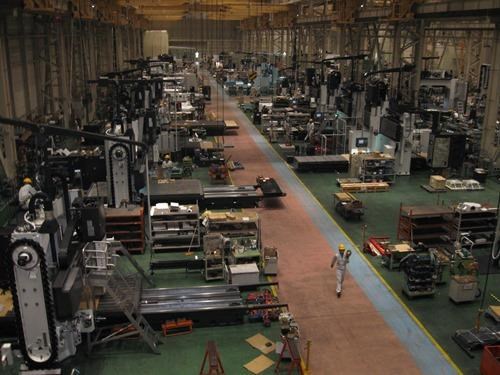Why a Dual-Column Machining Center?
According to this machine tool supplier, a dual-column or bridge-type machining center is 10 times more thermally stable than a comparable “C” style machine.
Share






Dual-column machining centers being produced at Okuma’s production facility in Kani, Japan.
According to machine tool distributor Gosiger, a dual-column or bridge-type machining center is 10 times more thermally stable than a comparable “C” style machine. Because of the dual-column design, says the company, heat affects the bridge structure linearly. The machine expands only in a straight line, allowing dimensional changes to be compensated electronically.
The dual-column design also places the spindle nearer to the center of mass of the machine, increasing rigidity. Read more in Gosiger’s article about dual-column machines.
Related Content
-
The Benefits of In-House Toolmaking
The addition of two larger gantry routers has enabled a maker of rubber belting products to produce more tooling in-house, reducing lead times and costs for itself and its sister facilities.
-
DN Solutions America Unveils Impressive Chicago Technical Center at IMTS 2024
New tech center is serving as a cutting-edge showroom and a technological hub for advanced machining applications.
-
Tsugami Lathe, Vertical Machining Center Boost Machining Efficiency
IMTS 2024: Tsugami America showcases a multifunction sliding headstock lathe with a B-axis tool spindle, as well as a universal vertical machining center for rapid facing, drilling and tapping.













